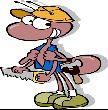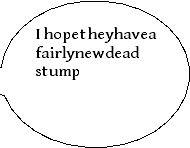Natural Solutions to Things That Bug You (8 page)
Read Natural Solutions to Things That Bug You Online
Authors: Myles Bader

ANT SPRAY FOR THE GARDEN
 The following ingredients will be needed:
The following ingredients will be needed:
2 Tablespoons of flaked Ivory soap
1 Tablespoon of Tabasco Sauce™
5 Drops of sesame seed oil (from health food store)
5 Drops of Jungle Rain™ (from garden supply)
1 Gallon spray bottle
Place all ingredients in the gallon bottle and shake to mix well. This can be sprayed directly on the ants or on their pathways.
Keep away from children and pets.
POWDER THEIR NOSES
Place diatomaceous earth (DE food grade), powdered charcoal, powdered pyrethrum-silica dust or bone meal around the base of the plants in an area; in which the ants are bothering the plants.
Do not breathe in the dust, best to wear a mask when mixing the ingredients.
ARGENTINE ANTS
 This ant has become very popular in the southern part of the United States as well as California. It is very active and protects honeydew-producing insects such as aphids, whiteflies and soft scales.
This ant has become very popular in the southern part of the United States as well as California. It is very active and protects honeydew-producing insects such as aphids, whiteflies and soft scales.
They are one of the more common house ants that come in when it rains or gets too hot outside. They are a little bigger than the sugar ant and are usually brown to black in color. You need to locate the colony and their point of entrance to stop them. The remedies are the same for the general ant solutions.
These are hard colonies to get rid of since they usually have more than one queen. It is best to give them a bait to take back to the queen instead of trying to spray killer on them. They like to establish their colony near the base of an aphid-infested plant.
SLIPPERY SUGGESTION
To keep ants from getting on your plants, just place some lard, Vaseline®, Crisco®, butter, etc. around the base of the plant.

CARPENTER ANTS
Identification:
 Carpenter ants come in five sizes from about ¼ inch to ¾ inches and are about ½ inch longer than most other ants. It has a pinched wasp waist and elbowed antennae and will be black or bi-colored red and black or black and brown depending on the area of the country they reside in.
Carpenter ants come in five sizes from about ¼ inch to ¾ inches and are about ½ inch longer than most other ants. It has a pinched wasp waist and elbowed antennae and will be black or bi-colored red and black or black and brown depending on the area of the country they reside in.
The colony consists of a queen (larger ant), male (smaller ant), minor workers, intermediate workers and the major workers. One nest may contain ants of all five sizes and they are easily confused with termites, but will usually not have wings. The termites also tend to remain at home while the carpenter ants travel about. When disturbed, the carpenter ant will emit a strong odor.
General Information:
 These are normally beneficial insects that chew up mountains of dead wood and turn it into sawdust. However, when they get into a wood structure the damage can be horrendous. Their initial nest is established in decayed wood, however, after they get established they tend to head for healthy wood and end up doing extensive damage.
These are normally beneficial insects that chew up mountains of dead wood and turn it into sawdust. However, when they get into a wood structure the damage can be horrendous. Their initial nest is established in decayed wood, however, after they get established they tend to head for healthy wood and end up doing extensive damage.
If the ant colony becomes too large they tend to form satellite colonies in a nearby structure. There is usually only one queen and she remains in the parent colony. The ants will go back and forth from satellites to parent colonies. There may be as many as 20 colonies related to the parent colony. Peak traffic hours on their trails are usually at night starting at sunset. They are attracted by sweets but can survive on insects and other animal remains.
Queens can live up to 15 years and lay over 70,000 eggs. It is best to eliminate the queen if you have a problem with carpenter ants. A pest control service is best if you have a large infestation. Carpenter ants are often confused with termites and may be winged.
LOVE CERTAIN TREES BEST
Carpenter ants prefer evergreen, cedar and Douglas fir trees best and will look for the for satellite locations as the original nest fills up and gets over-crowded.
LONG LIVE THE QUEEN
Carpenter ants are very resourceful and if you kill the queen the workers can produce special eggs that will produce a new queen.
Most of the ants remain in the nest and only about 2% are out foraging for food. If the food supply is low the queen will eat her own eggs and the smaller larvae.


THE GOURMET ANT FEAST
Carpenter ants as well as all other ants love to eat aphid’s honeydew or tree sap. They also feast on grasshoppers, crickets, craneflies, aphids, spiders, moth larvae, earthworms, bees and flies.
They really like our food as well when they can get it and prefer soda pop, candy, syrup, honey, raisins and pet food. They are smart enough to take more solid foods over to water and allow the food to soak and get soft before they eat it. They are very good at eating insect parts and extracting nutrients and liquid from them.
 These are normally beneficial insects that chew up mountains of dead wood and turn it into sawdust. However, when they get into a wood structure the damage can be horrendous. Their initial nest is established in decayed wood, however, after they get established they tend to head for healthy wood and end up doing extensive damage.
These are normally beneficial insects that chew up mountains of dead wood and turn it into sawdust. However, when they get into a wood structure the damage can be horrendous. Their initial nest is established in decayed wood, however, after they get established they tend to head for healthy wood and end up doing extensive damage.
TYPE OF HOUSE TO BE ATTACKED
 Wood frame
Wood frame
